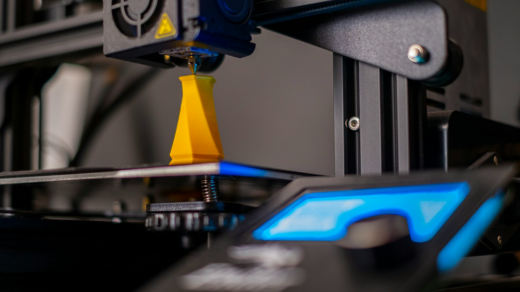In the ever-evolving world of manufacturing, speed, efficiency, and adaptability are becoming increasingly critical. For companies looking to stay ahead, traditional production methods like injection molding or CNC machining don’t always offer the flexibility needed to create intricate, low-volume, or highly specialized components. That’s where 3D printing—also known as additive manufacturing—enters the scene as a revolutionary solution. What once seemed like a futuristic novelty has matured into a reliable and versatile tool for producing custom parts, whether you’re prototyping a new idea or fabricating end-use components. But why exactly should you choose 3D printing over other options for custom part manufacturing? Let’s break it down.
Unmatched Flexibility in Design and Production
One of the most compelling reasons to choose 3D printing is the unparalleled design freedom it offers. Unlike traditional manufacturing methods, which are often limited by tooling constraints, 3D printing builds objects layer by layer from a digital file. This allows for the creation of highly complex geometries—such as hollow structures, intricate internal channels, and organic curves—that would be difficult, expensive, or downright impossible to produce using conventional methods.
For engineers and designers, this means they can focus on optimizing the part for performance rather than manufacturability. Need to reduce weight without sacrificing strength? No problem—3D printing lets you incorporate lattice structures or remove unnecessary bulk. Need a part with an integrated hinge, thread, or mount? It can be designed and printed as one piece, eliminating the need for assembly. This flexibility opens the door to more creative, efficient, and high-performing solutions, especially in industries like aerospace, automotive, healthcare, and consumer electronics.
Rapid Prototyping and Fast Iteration
Speed is often everything when it comes to bringing a new product to market. With 3D printing, turnaround times can be slashed from weeks to days or even hours. Once a 3D model is ready, it can be printed almost immediately without waiting for molds or tooling. This allows for rapid prototyping—a game changer for innovation cycles. Engineers and product teams can test, tweak, and reprint designs in a continuous loop until they arrive at the ideal solution.
This fast iteration process doesn’t just save time—it also helps identify design flaws earlier, reducing the risk of costly mistakes down the line. A 3D-printed prototype gives you a physical, functional version of your design that can be used for fit checks, functional testing, or even customer feedback. As a result, decision-making becomes faster and more informed, and the final product is far more likely to meet both technical requirements and user expectations.
Cost-Effective for Low-Volume Production
Another major advantage of 3D printing is its cost-effectiveness for low to medium production runs. Traditional manufacturing is often prohibitively expensive for small batches due to the high upfront costs of tooling, molds, and setup. But with 3D printing, there’s no need for specialized tooling—each item is printed directly from a digital file. This significantly lowers the cost per unit for custom or short-run parts, making 3D printing an attractive option for startups, R&D teams, and companies offering made-to-order or personalized products.
Whether you’re producing 10 parts or 1,000, the economics of 3D printing remain favorable. Additionally, the technology is highly scalable: as demand increases, you can simply add more printers to meet production goals without the logistical complexity of retooling an entire factory floor.
Material Variety and Application-Specific Options
Modern 3D printing isn’t limited to just plastics. In fact, one of the most exciting aspects of the technology is the growing range of printable materials. From high-strength engineering polymers like nylon and polycarbonate to advanced composites infused with carbon fiber, and even metals like titanium and stainless steel—there’s a material for nearly every application.
This versatility allows manufacturers to select materials based on the specific requirements of the part, whether it needs to be heat-resistant, lightweight, impact-resistant, or biocompatible. In industries like healthcare, 3D printing has enabled the creation of patient-specific implants and prosthetics using bio-compatible materials, while in aerospace, it supports the fabrication of lightweight yet durable engine parts that can withstand extreme conditions.
Sustainability and Waste Reduction
Sustainability is no longer a nice-to-have—it’s a business imperative. Traditional subtractive manufacturing methods typically start with a large block of material and cut away excess, resulting in significant waste. In contrast, 3D printing is an additive process that only uses the material needed to create the part, drastically reducing scrap and wasted resources.
Additionally, many 3D printing materials are recyclable or derived from renewable sources, and parts can often be produced locally, reducing the carbon footprint associated with long-distance shipping. The ability to manufacture on-demand also means companies can avoid overproduction and reduce inventory costs, contributing to a more sustainable production model overall.
On-Demand Manufacturing and Supply Chain Resilience
Supply chain disruptions have become a harsh reality in recent years, highlighting the risks of relying too heavily on global networks and just-in-time production models. 3D printing offers a way to localize manufacturing and increase supply chain resilience. By maintaining digital inventories rather than physical stockpiles, businesses can produce replacement parts or new components on-demand and closer to the point of use.
This agility is particularly valuable in industries like aerospace, automotive, and defense, where downtime can be extremely costly. If a component fails or needs modification, a digital file can be sent to a nearby facility and printed within hours—no need to wait for overseas suppliers or navigate complex logistics.
Customization and Personalization
In today’s market, consumers and businesses alike are increasingly seeking products tailored to their unique needs. Whether it’s a customized tool, a one-off medical device, or a consumer product with personalized features, 3D printing makes true customization both practical and affordable. Unlike mass production, where design changes can be expensive and slow, 3D printing allows for easy modifications from one part to the next without disrupting the workflow.
This makes the technology ideal for bespoke manufacturing, from dental implants to wearable tech. It also enables innovation in sectors like fashion, art, and architecture, where form and function can be combined in entirely new ways. In essence, 3D printing empowers creators and engineers to offer products that are as unique as the individuals who use them.
Final Thoughts: A New Era of Custom Manufacturing
Choosing 3D printing for custom part manufacturing isn’t just about adopting a new technology—it’s about embracing a new mindset. It’s about valuing speed, adaptability, and innovation over tradition. Whether you’re a startup testing your first prototype, an established manufacturer looking to streamline production, or a designer pushing the limits of creativity, 3D printing offers a toolbox of possibilities that conventional methods simply can’t match.
By eliminating tooling constraints, accelerating design cycles, reducing waste, and enabling full customization, 3D printing is rewriting the rules of manufacturing. And as the technology continues to advance—bringing new materials, higher resolution, and greater speed—it’s clear that this isn’t just a passing trend. It’s the future of custom production.





